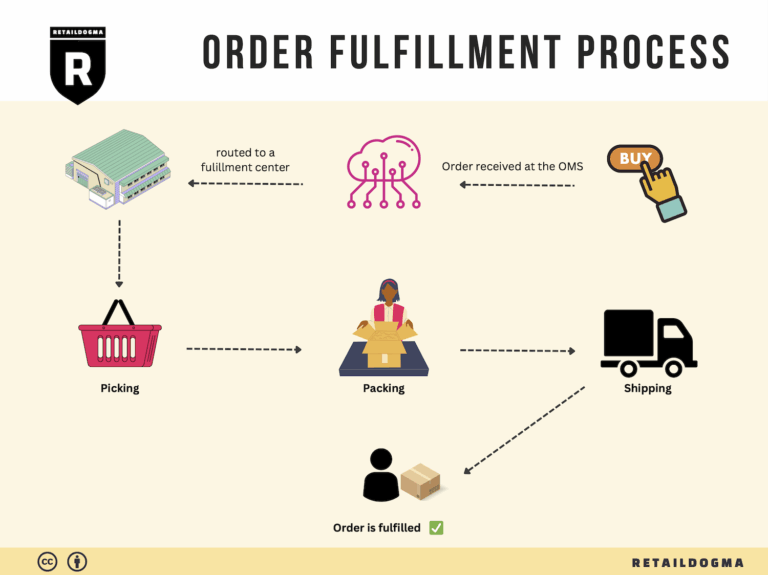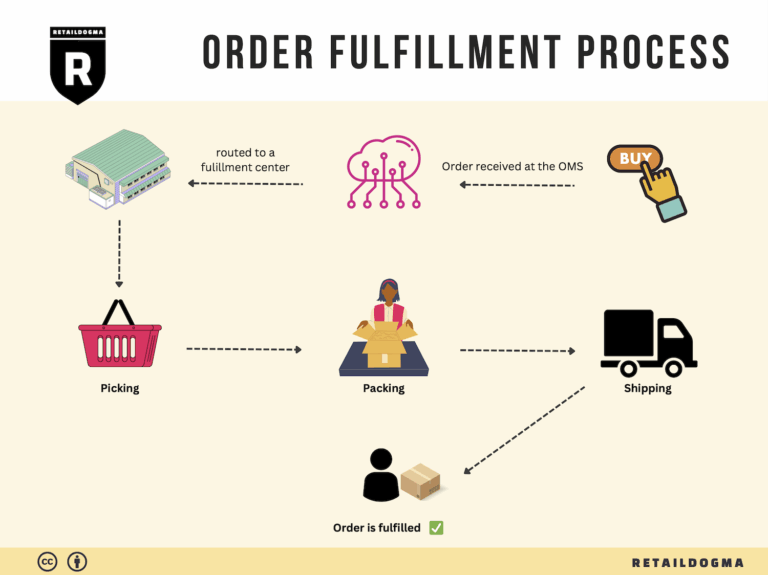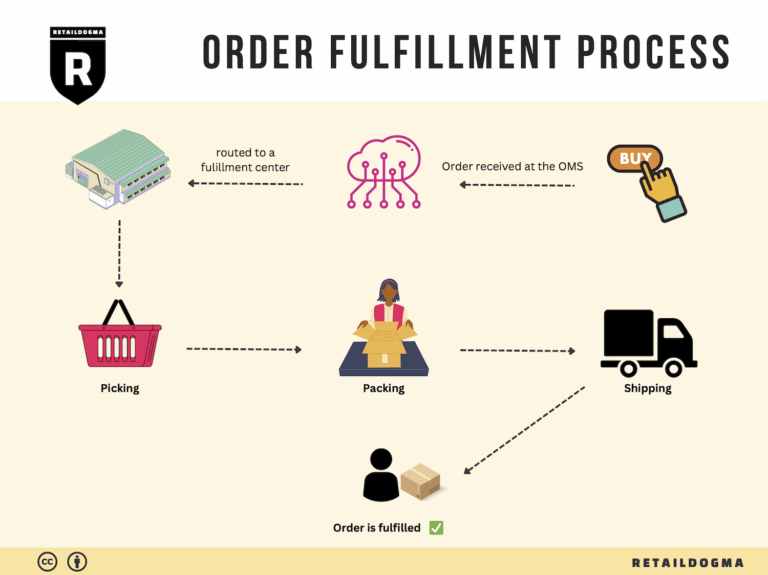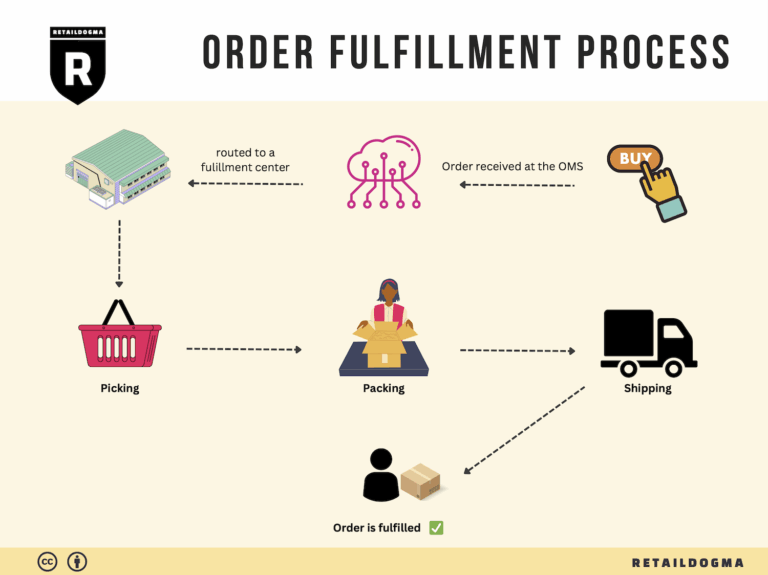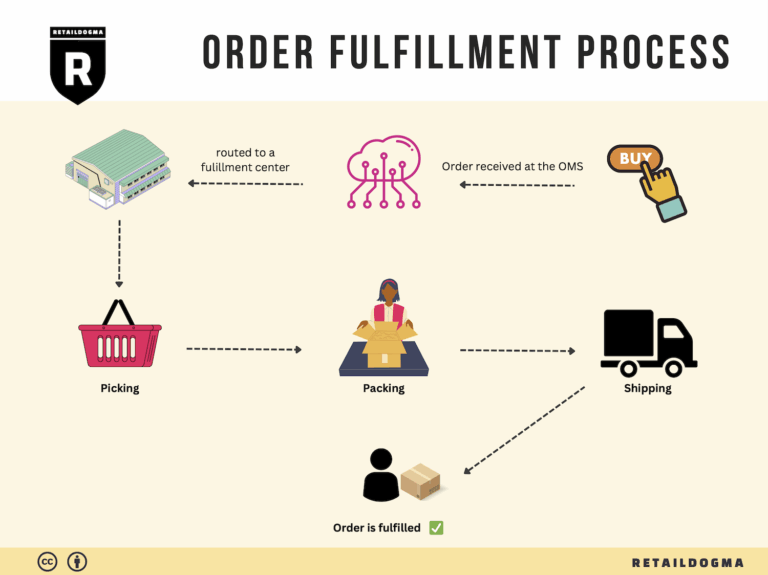Ecommerce Fulfillment Services: The Ultimate Guide (2025)
What is E-commerce Fulfillment? An Introduction for Growing Businesses
Understanding E-commerce Fulfillment for Growing Businesses
As an e-commerce business owner, you may find yourself facing a common challenge: the overwhelming task of packing and shipping orders. What starts as a thrilling journey of building an online store can quickly turn into a logistical nightmare, especially as your sales begin to grow. Managing inventory, ensuring timely deliveries, and maintaining customer satisfaction can consume valuable time and resources, diverting your focus from what truly matters—growing your business.
E-commerce fulfillment is essentially the process of getting a product from your warehouse to your customer’s doorstep. It encompasses everything from receiving inventory to picking, packing, shipping, and managing returns. For growing businesses, understanding the nuances of fulfillment is critical to scaling operations effectively and efficiently.
In this guide, we will explore the various fulfillment models available to e-commerce businesses, such as Third-Party Logistics (3PL) and Fulfillment by Amazon (FBA). Each model offers unique advantages and may suit different business needs depending on factors like product type, volume, and customer expectations.
We will also delve into the core services that fulfillment partners typically provide. These include inventory management, order processing, shipping logistics, and returns handling. Understanding these services will help you identify what you need from a fulfillment partner to support your business growth.
Choosing the right fulfillment partner is a pivotal decision for your e-commerce operation. We will provide insights into the criteria you should consider, such as technology integration, scalability, cost structures, and customer service capabilities. By evaluating these factors, you can select a partner that aligns with your business goals and enhances your operational efficiency.
Pricing is another critical aspect we will cover. Different fulfillment models come with varying cost structures, and understanding these can help you make informed financial decisions. We will outline how pricing works in various models, allowing you to budget effectively and avoid unexpected expenses.
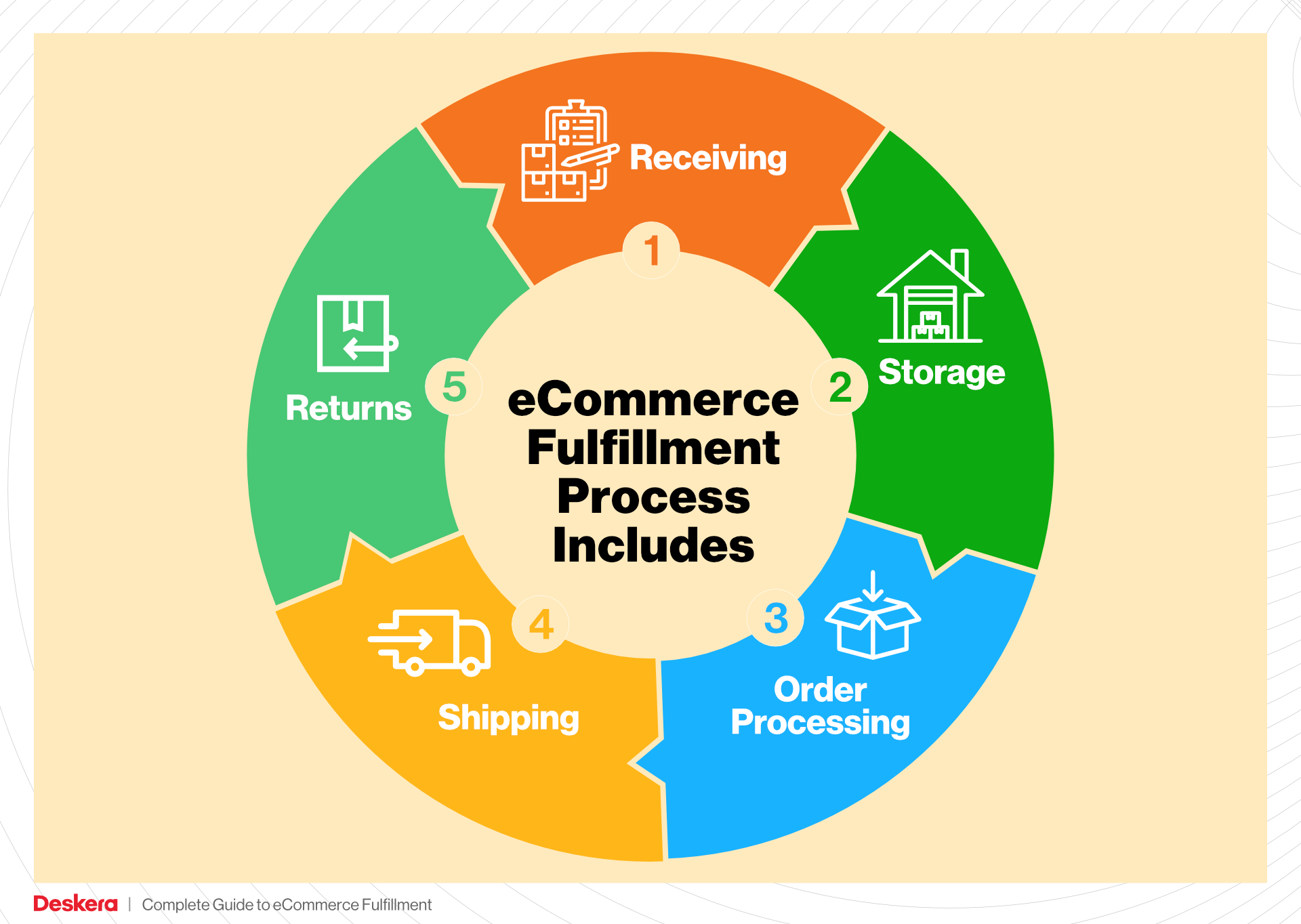
The ultimate goal of this guide is to empower e-commerce businesses like yours to make smart, strategic decisions about logistics. By understanding the ins and outs of e-commerce fulfillment, you will be better equipped to streamline operations, improve customer satisfaction, and drive growth in an increasingly competitive market.
What You’ll Learn In This Guide
- What is E-commerce Fulfillment? An Introduction for Growing Businesses
- The Order Fulfillment Process: From ‘Buy’ Button to Customer’s Door
- Comparing Fulfillment Models: In-House vs. 3PL vs. Dropshipping
- A Deep Dive into Amazon FBA: Pros, Cons, and Who It’s For
- Core Services Offered by Fulfillment Centers
- How to Choose a Fulfillment Partner: A 6-Point Checklist
- Understanding Fulfillment Pricing: A Breakdown of Common Fees
- Frequently Asked Questions (FAQs) about Fulfillment
- Conclusion: Is Outsourcing Fulfillment the Right Move for Your Business?
- Important Disclaimer
The Order Fulfillment Process: From ‘Buy’ Button to Customer’s Door
1. Receiving Inventory
The order fulfillment process begins with receiving inventory, a crucial step that sets the foundation for efficient operations. During this phase, products from suppliers are delivered to the warehouse. Each item is checked against purchase orders to ensure accuracy, and any discrepancies are addressed immediately.
This step is important because proper receiving establishes inventory accuracy and prevents stockouts or overstock situations later in the process. A key term associated with this step is SKU (Stock Keeping Unit), which uniquely identifies each product and facilitates tracking throughout the inventory management system. Efficient inventory receiving ensures that your warehouse is stocked correctly, enabling a smooth transition into storage and subsequent fulfillment stages.
2. Warehouse Storage
Once inventory is received, it is stored in designated locations within the warehouse. Effective warehouse storage practices involve organizing products systematically, often using methodologies like FIFO (First In, First Out) or LIFO (Last In, First Out), depending on the product type.
This stage is vital for maintaining order accuracy and accessibility. A well-organized warehouse reduces the time spent locating products, which directly impacts order fulfillment speed. The term bin location is significant here, as it refers to the specific area in the warehouse where each SKU is stored. By optimizing storage space and ensuring easy access to frequently ordered items, businesses can enhance their operational efficiency and improve customer satisfaction.
3. Order Picking
Order picking is the process of retrieving items from their storage locations to fulfill customer orders. This step can be done manually or with the help of automated systems, depending on the scale of operations. Pick lists, which detail the items and quantities needed for each order, guide this process.
The importance of order picking lies in its direct impact on order accuracy and fulfillment speed. Errors in this phase can lead to incorrect orders being shipped, which can harm customer satisfaction and increase return rates. The use of pick-to-light systems or voice picking technology can streamline this process, allowing warehouse staff to locate and gather products quickly and efficiently. By prioritizing accuracy and speed in order picking, businesses can ensure a smooth transition to the packing phase.
4. Order Packing
After items are picked, they are packed for shipment. This step involves selecting appropriate packaging materials, securely placing products within boxes, and including necessary documentation, such as packing slips and return instructions.

Packing is crucial because it protects items during transit and ensures that they arrive in perfect condition. Moreover, it presents an opportunity for branding; customized packing can enhance the customer experience and encourage repeat purchases. A key term here is packing slip, which is a document that itemizes the products included in the shipment. Efficient packing processes minimize shipping costs and reduce the likelihood of damage during transport, ultimately improving customer satisfaction.
5. Shipping & Delivery
The final step in the order fulfillment process is shipping and delivery. Once orders are packed, they are labeled and handed over to shipping carriers. This phase involves selecting the most appropriate shipping method based on factors such as cost, speed, and destination.
Shipping and delivery are critical for customer satisfaction, as timely delivery can make or break a customer’s experience. The term last-mile delivery is significant in this context, as it refers to the final leg of the shipping journey, where the package is delivered from a transportation hub to the end customer. By utilizing a robust logistics network and technology to track shipments, businesses can provide customers with real-time updates and enhance transparency. Efficient shipping strategies not only improve customer satisfaction but also foster loyalty and repeat business.
By understanding and optimizing each step of the order fulfillment process, e-commerce businesses can scale their operations effectively while maintaining high levels of customer satisfaction. Implementing best practices in these areas will position your business for growth in an increasingly competitive landscape.
Comparing Fulfillment Models: In-House vs. 3PL vs. Dropshipping
Fulfillment Model Comparison
| Model | Who Handles Inventory | Best For (Business Stage) | Key Advantage | Key Disadvantage |
|---|---|---|---|---|
| In-House Fulfillment | The business itself | Established brands with steady demand | Complete control over inventory and processes | High overhead costs and fixed commitments |
| Third-Party Logistics (3PL) | 3PL provider | Rapidly growing brands | Scalability and reduced operational risk | Potential loss of control over fulfillment |
| Dropshipping | Supplier | Startups or niche brands | Low upfront investment and no inventory risk | Lower profit margins and longer shipping times |
In-House Fulfillment
In-house fulfillment refers to a model where a business manages its own inventory, warehousing, and order fulfillment processes internally. This approach is often favored by established brands with steady demand and the financial capacity to maintain their own logistics operations. The key advantage of in-house fulfillment is the complete control it offers over inventory management, packaging, and shipping processes. Businesses can tailor their operations to meet specific customer needs, ensuring a consistent brand experience. However, this model comes with significant overhead costs, including the expenses associated with leasing warehouse space, hiring staff, and managing inventory levels. Additionally, businesses are often required to commit to fixed costs and long-term leases, which can strain cash flow and limit flexibility, especially during periods of fluctuating demand.
Third-Party Logistics (3PL)
Third-party logistics (3PL) involves outsourcing logistics functions to a specialized provider that manages warehousing, inventory, and order fulfillment on behalf of the business. This model is particularly beneficial for rapidly growing brands that experience seasonal spikes in demand or are looking to expand into new markets without the burden of managing logistics in-house. One of the key advantages of 3PL fulfillment is its scalability; businesses can adjust their logistics operations in real-time based on actual demand, allowing for a more agile response to market changes. Moreover, 3PL providers often have access to advanced technology and a network of strategically located warehouses, which can significantly reduce shipping times and costs. However, relying on a 3PL can lead to a perceived loss of control over the fulfillment process, as businesses must trust external partners to maintain their standards of service and quality.
Dropshipping
Dropshipping is a fulfillment model where a business sells products without holding any inventory. Instead, when a customer places an order, the business purchases the item from a third-party supplier who then ships it directly to the customer. This model is ideal for startups and niche brands that want to minimize upfront investment and avoid the risks associated with inventory management. The primary advantage of dropshipping is that it allows entrepreneurs to launch their online stores with minimal financial commitment, as there is no need to invest in stock or warehouse space. However, dropshipping can also present challenges, including lower profit margins due to reliance on suppliers and longer shipping times that can lead to customer dissatisfaction. Additionally, businesses may face limitations in product quality control and branding opportunities, as the fulfillment process is entirely managed by external suppliers.
Conclusion
In summary, choosing the right fulfillment model is crucial for e-commerce businesses aiming to scale efficiently. Each model—In-House Fulfillment, Third-Party Logistics, and Dropshipping—offers distinct advantages and disadvantages that can impact operational efficiency, customer satisfaction, and overall profitability. As businesses evaluate their growth strategies, understanding the nuances of each fulfillment model will enable them to select the most suitable approach for their unique needs and market conditions.
A Deep Dive into Amazon FBA: Pros, Cons, and Who It’s For
Understanding Fulfillment by Amazon (FBA)
Fulfillment by Amazon (FBA) is a service that enables e-commerce sellers to store their products in Amazon’s fulfillment centers. Amazon takes care of storage, packaging, and shipping of the products directly to customers. This service allows businesses to leverage Amazon’s vast logistics network, making it easier for sellers to reach a larger customer base without the complexities of managing their own fulfillment operations.
How FBA Works
-
Setting Up Your Account: To start using FBA, sellers need to set up an Amazon seller account and enroll in the FBA program. This requires providing details about the business, including tax information and payment preferences.
-
Product Listing and Preparation: Sellers create listings for their products on Amazon. They must prepare their products according to Amazon’s guidelines, which include labeling and packaging requirements.
-
Shipping Inventory to Amazon: Once the products are prepared, sellers ship their inventory to Amazon’s fulfillment centers. Amazon provides shipping plans to help sellers understand where to send their products.
-
Storage and Fulfillment: Amazon stores the inventory in their warehouses. When a customer places an order, Amazon picks, packs, and ships the product on behalf of the seller.
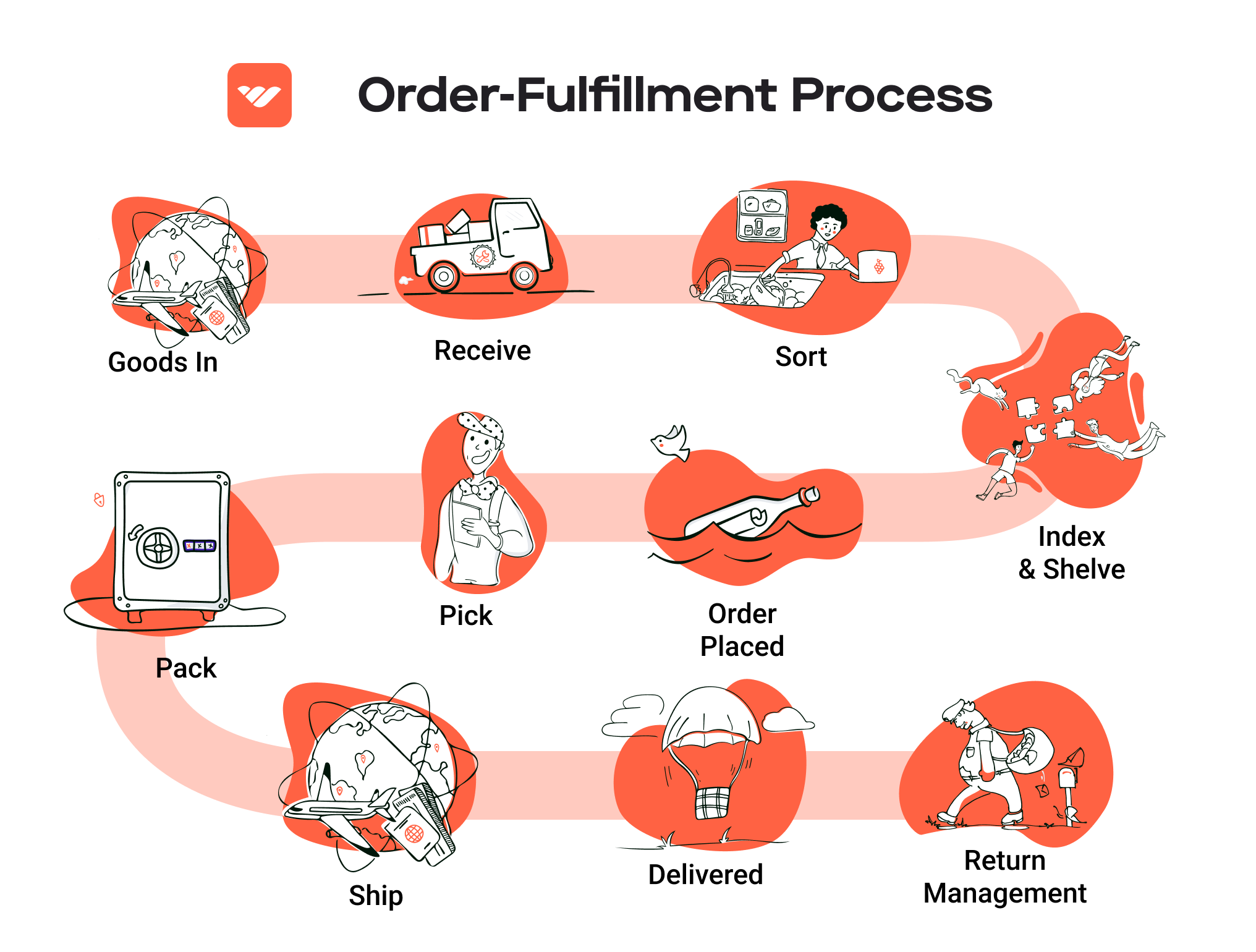
-
Customer Service and Returns: Amazon handles customer inquiries, returns, and refunds, providing a seamless experience for both sellers and buyers.
-
Payment: Sellers receive payments for their sales, minus Amazon’s fees, which are deducted from the sale price.
Pros of Using FBA
-
Prime Eligibility: Products fulfilled by Amazon automatically qualify for Amazon Prime, giving sellers access to millions of Prime members who prefer fast and free shipping.
-
Customer Trust: Leveraging Amazon’s brand recognition and customer service enhances buyer trust. Shoppers are more likely to purchase products fulfilled by Amazon due to their confidence in the platform’s reliability.
-
Multi-Channel Fulfillment: FBA allows sellers to fulfill orders from other sales channels, such as their own websites or other online marketplaces. This flexibility helps businesses streamline their operations and maintain consistent inventory management across platforms.
-
Scalability: FBA provides sellers with the ability to scale their businesses without the need for significant upfront investment in warehousing or logistics infrastructure. As sales increase, sellers can rely on Amazon’s established logistics network to meet growing demand.
-
Time Savings: By outsourcing fulfillment to Amazon, sellers can focus on other crucial aspects of their business, such as marketing, product development, and customer engagement.
-
Access to Advanced Tools: FBA sellers benefit from Amazon’s sophisticated analytics and reporting tools, which can help in tracking sales performance and inventory levels.
Cons of Using FBA
-
High Fees: FBA comes with various fees, including storage fees for inventory stored in Amazon’s warehouses and fulfillment fees per unit sold. These costs can add up, especially for low-margin products or during peak seasons when storage fees can spike.
-
Strict Inventory Rules: Amazon has stringent guidelines regarding inventory management, including restrictions on certain products and requirements for labeling and packaging. Sellers must comply with these rules or risk having their inventory rejected or removed.
-
Commingling Risks: FBA has a commingling policy that allows products from different sellers to be stored together. This can lead to issues if customers receive products that do not match the seller’s quality standards, potentially impacting seller ratings and reviews.
-
Limited Control Over Fulfillment: When using FBA, sellers relinquish control over the fulfillment process. This can lead to challenges in managing customer expectations, especially during peak times when fulfillment centers may experience delays.
-
Inventory Management Challenges: Sellers must carefully manage their inventory levels to avoid long-term storage fees and stockouts. Misjudging demand can lead to additional costs or lost sales opportunities.
Who is FBA Best For?
Fulfillment by Amazon is particularly well-suited for:
- Small to Medium-Sized Businesses: Those looking to expand their reach without investing heavily in logistics infrastructure can benefit from FBA’s scalability and efficiency.
- E-commerce Entrepreneurs: New sellers who want to enter the Amazon marketplace quickly and leverage the platform’s extensive customer base.
- Brands with High Demand Products: Sellers with popular or seasonal products can take advantage of FBA’s fast shipping and customer service to enhance their sales.
- Multi-Channel Retailers: Businesses that sell on various platforms can use FBA to streamline fulfillment across channels, thereby improving operational efficiency.
- Sellers Willing to Pay for Convenience: Those who prioritize convenience and time savings over cost may find FBA an attractive option, allowing them to focus on growth strategies rather than logistics management.
In conclusion, while FBA offers numerous advantages such as increased visibility, customer trust, and operational efficiency, it also presents challenges, particularly related to costs and control. E-commerce business owners must carefully evaluate their specific needs and market conditions to determine if FBA aligns with their growth strategy.
Core Services Offered by Fulfillment Centers
Inventory Management & Warehousing
Inventory management and warehousing are foundational services provided by fulfillment centers that enable e-commerce businesses to maintain control over their stock levels while optimizing storage costs. This service involves the systematic tracking of inventory, ensuring that businesses know exactly what products are available, where they are located, and when they need to be replenished.
The benefits of effective inventory management are manifold. First, it allows e-commerce businesses to reduce the risk of stockouts, which can lead to missed sales opportunities and dissatisfied customers. By using advanced inventory management software, fulfillment centers can provide real-time visibility into stock levels, enabling businesses to make informed decisions based on current demand and sales trends.
Moreover, warehousing services offered by fulfillment centers often include strategically located facilities that allow for faster shipping times. By storing products closer to the end customer, businesses can minimize shipping costs and enhance delivery speed, which is critical in today’s e-commerce landscape where customers expect quick fulfillment. Additionally, on-demand fulfillment models eliminate the need for businesses to commit to long-term leases or invest heavily in warehousing infrastructure, providing a flexible solution that scales with demand.
Pick and Pack Services
Pick and pack services represent another crucial offering from fulfillment centers, directly impacting the efficiency of order fulfillment processes. This service entails the picking of products from warehouse shelves and packing them for shipment to customers. Fulfillment centers employ specialized staff and technology to streamline this process, ensuring that orders are accurately assembled and shipped in a timely manner.
The primary benefit of pick and pack services is the increase in operational efficiency. By outsourcing this function to a fulfillment center, e-commerce businesses can focus their resources on core activities such as marketing and product development, rather than getting bogged down in logistics. Furthermore, fulfillment centers utilize automated systems and best practices to minimize errors in order fulfillment, which can enhance customer satisfaction and reduce the costs associated with returns and reshipments.
In addition, fulfillment centers often provide customizable packing options, allowing businesses to create a unique unboxing experience for their customers. This can include branded packaging, inserts, or promotional materials that enhance brand visibility and customer loyalty. By leveraging the expertise of fulfillment centers in pick and pack operations, e-commerce businesses can scale their order fulfillment capabilities without compromising on quality or speed.
Kitting and Assembly
Kitting and assembly services offered by fulfillment centers enable e-commerce businesses to bundle products together into kits or sets, ready for sale. This service is particularly valuable for businesses that sell products that are commonly purchased together, such as gift sets, subscription boxes, or promotional items. Kitting involves the gathering of multiple items, packaging them together, and preparing them for shipment as a single unit.
The benefits of kitting and assembly services are significant. First, it allows businesses to streamline their inventory management by reducing the number of individual SKUs they need to track. Instead of managing multiple components, businesses can sell a single kit, simplifying order processing and inventory control.
Moreover, kitting can enhance the customer experience by offering convenience and value. Customers appreciate the ease of purchasing bundled items, and this can lead to increased average order value and improved sales. Additionally, fulfillment centers can handle the complexities of assembly and packaging, freeing up internal resources and allowing businesses to focus on growth and marketing strategies.
Returns Management (Reverse Logistics)
Returns management, also known as reverse logistics, is an essential service provided by fulfillment centers that addresses the complexities of handling product returns. This service encompasses the entire process of managing returns, from providing customers with return labels to inspecting returned items and restocking them in inventory.
The ability to efficiently manage returns is crucial for e-commerce businesses, as high return rates can significantly impact profitability. Fulfillment centers streamline this process by implementing automated systems that facilitate easy return procedures for customers. This not only enhances customer satisfaction but also fosters brand loyalty, as consumers are more likely to shop with businesses that offer hassle-free return policies.
Additionally, effective returns management helps businesses gain valuable insights into product performance and customer preferences. By analyzing return data, e-commerce companies can identify trends, such as common reasons for returns, which can inform product development and inventory decisions. Furthermore, fulfillment centers can facilitate the refurbishment or recycling of returned products, minimizing waste and maximizing recovery on unsold inventory.
In conclusion, the core services offered by fulfillment centers—inventory management and warehousing, pick and pack services, kitting and assembly, and returns management—are designed to optimize the logistics operations of e-commerce businesses. By leveraging these services, businesses can improve efficiency, reduce costs, and enhance customer satisfaction, ultimately positioning themselves for sustainable growth in the competitive e-commerce landscape.
How to Choose a Fulfillment Partner: A 6-Point Checklist
Location & Warehouse Network
Importance:
The geographical location of your fulfillment partner’s warehouses can significantly impact shipping times and costs. Proximity to your customer base reduces delivery times and enhances customer satisfaction. A well-distributed warehouse network allows for efficient handling of orders, especially during peak seasons.
Questions to Ask:
– Where are your warehouses located? How does this align with my target market?
– Can you provide options for splitting inventory across multiple locations?
– What is your average shipping time to major regions, and how do you handle last-mile delivery?
Technology & Integrations
Importance:
In today’s e-commerce landscape, technology plays a crucial role in order fulfillment efficiency. A partner with robust technology can streamline operations, provide real-time inventory tracking, and integrate with your existing e-commerce platforms (like Shopify, WooCommerce, etc.). This ensures a seamless flow of information, reducing errors and improving customer experience.
Questions to Ask:
– What order management and inventory tracking systems do you use?
– Can your technology integrate with my current e-commerce platform and other systems?
– Do you provide real-time analytics and reporting tools to monitor performance?
Specializations (e.g., Cold Storage, Oversized Items)
Importance:
Not all fulfillment partners offer the same services. Depending on your product type, you may require specialized facilities, such as cold storage for perishables or capabilities for handling oversized or fragile items. Ensuring your partner can meet these specific needs is vital for protecting your products and maintaining quality.
Questions to Ask:
– Do you have specialized facilities for handling my product type (e.g., temperature-controlled storage, oversized items)?
– What processes do you have in place to ensure product safety and quality during storage and shipping?
– Can you provide case studies or examples of how you’ve successfully handled similar products?
Scalability & Capacity
Importance:
As your business grows, your fulfillment needs will evolve. A partner that offers scalable solutions will allow you to adjust capacity based on demand fluctuations without incurring unnecessary costs. This flexibility can be particularly beneficial during seasonal spikes or product launches.
Questions to Ask:
– How do you handle fluctuations in order volume?
– What is your capacity for scaling up or down during peak seasons?
– Are there any limitations on storage space or order volume that I should be aware of?
Pricing and Contracts
Importance:
Understanding the pricing structure and contract terms is essential to avoid unexpected costs and ensure a sustainable partnership. Look for a transparent pricing model that reflects your business’s financial goals and growth projections. Flexibility in contracts can also provide peace of mind as your business evolves.
Questions to Ask:
– What is your pricing structure? Are there additional fees (e.g., for storage, picking, or shipping)?
– Do you offer a pay-as-you-go model, or are there long-term contracts involved?
– What is your policy on contract termination or changes as my business needs evolve?
Customer Support & Reviews
Importance:
Reliable customer support is crucial for resolving issues quickly and maintaining smooth operations. Additionally, researching reviews and testimonials can provide insight into a partner’s reputation and reliability. A partner that values communication and support can be a significant asset as you scale your business.
Questions to Ask:
– What level of customer support do you provide (e.g., dedicated account manager, 24/7 support)?
– Can you provide references from current clients in my industry?
– How do you handle issues such as order discrepancies or shipping delays?
Conclusion
Choosing the right fulfillment partner is a critical decision that can impact your e-commerce business’s efficiency and growth. By using this checklist, you can systematically evaluate potential 3PL partners and ensure they align with your operational needs and business objectives. Conduct thorough research and ask pointed questions to find a partner that will support your business as it scales.
Understanding Fulfillment Pricing: A Breakdown of Common Fees
Initial Setup Fees
When partnering with a fulfillment provider, businesses often encounter initial setup fees, which cover the costs associated with establishing your account and preparing your inventory for storage and order processing. These fees can vary significantly depending on the complexity of your needs and the provider’s specific requirements.
Calculation: Initial setup fees may include costs for account setup, integration with your e-commerce platform, and any necessary configuration of software or systems to handle your orders. Some providers may charge a flat fee, while others might base it on the number of products or SKUs you need to set up. It’s essential to clarify what is included in these fees and any ongoing support that may be required.
Receiving Fees
Receiving fees are incurred when your inventory arrives at the fulfillment center. This charge covers the labor and resources required to unload, inspect, and store your products. Depending on the provider, these fees can be structured as a per-unit cost or a flat fee based on the shipment size.
Calculation: Typically, receiving fees are calculated based on the number of units received. For instance, you might pay a specific fee for each item that is checked in and stored. In some cases, if the shipment is large or requires special handling, additional fees may apply. Understanding these fees helps you budget more effectively for incoming inventory.
Storage Fees (per pallet/bin)
Storage fees are charged for the space your inventory occupies within the warehouse. This can be a crucial cost factor, especially for businesses with fluctuating inventory levels. Fulfillment providers usually charge storage fees on a monthly basis, either per pallet or per bin, depending on how they organize their warehouse.
Calculation: Storage fees can be calculated as a fixed monthly rate per pallet or bin, or they might vary based on the volume of goods stored. For example, a provider may charge a lower rate for pallets that are stored for extended periods versus a higher rate for items that are frequently moved in and out. Be sure to inquire about tiered pricing structures, as this can impact your overall storage costs.
Pick & Pack Fees (per item/order)
Pick and pack fees represent the costs associated with retrieving items from storage and preparing them for shipment. This is a critical component of the fulfillment process, as it directly affects the speed and efficiency of order processing.
Calculation: These fees are generally calculated per item or per order. For instance, a provider might charge a flat fee for each order processed, plus an additional fee for every item picked. Some providers offer volume discounts for businesses with higher order volumes, which can significantly reduce costs for larger operations. Understanding how these fees are structured will help you optimize your order sizes and frequency.
Shipping Fees
Shipping fees cover the costs of delivering products to your customers and can vary widely based on several factors, including destination, shipping method, package weight, and dimensions. This is often one of the most significant expenses associated with order fulfillment.
Calculation: Shipping fees can be calculated based on the carrier’s pricing structure, which may include flat rates, weight-based rates, or distance-based rates. Some fulfillment providers may also offer discounted shipping rates through partnerships with carriers, which can lower your overall shipping costs. It’s essential to compare shipping options and understand how these fees will impact your pricing strategy and customer experience.
Tips for Getting an Accurate Quote
-
Define Your Needs: Clearly outline your product range, expected order volumes, and any specific requirements. This clarity will help providers give you a more tailored and accurate quote.
-
Ask About Hidden Fees: Inquire about any additional costs that may not be immediately apparent, such as returns processing, special handling, or seasonal storage fees.
-
Compare Multiple Providers: Don’t settle for the first quote you receive. Comparing several fulfillment providers will give you a broader perspective on pricing and services.
-
Evaluate Flexibility: Look for providers that offer scalable pricing models. Flexibility in pricing can help you manage costs more effectively as your business grows.
-
Negotiate Terms: Don’t hesitate to negotiate terms, especially if you anticipate high volumes or long-term partnerships. Many fulfillment providers are willing to work with you to create a mutually beneficial agreement.
By understanding these common fees and their calculations, you can make informed decisions that enhance your e-commerce operations while controlling costs effectively.
Frequently Asked Questions (FAQs) about Fulfillment
1. What is on-demand fulfillment?
On-demand fulfillment is a flexible logistics model where businesses only pay for the warehouse space, labor, and services they use as orders come in. This approach allows e-commerce brands to scale their operations up or down based on real-time demand without the burden of long-term contracts or excess inventory.
2. How does on-demand fulfillment work?
On-demand fulfillment typically involves partnering with a third-party logistics provider (3PL) that manages inventory, order processing, and shipping. Businesses send orders directly to the 3PL, which picks, packs, and ships products to customers. This allows companies to focus on core activities like marketing and product development.
3. What’s the difference between a warehouse and a fulfillment center?
A warehouse is primarily a storage facility where goods are kept until needed. In contrast, a fulfillment center is a specialized warehouse designed to handle the entire order fulfillment process, including inventory management, order processing, packing, and shipping directly to customers. Fulfillment centers are optimized for speed and efficiency to meet customer demands.
4. What is a 3PL?
A third-party logistics provider (3PL) is a service that manages logistics and supply chain operations for businesses. 3PLs offer a range of services, including warehousing, order fulfillment, inventory management, and shipping. By outsourcing these functions to a 3PL, e-commerce businesses can streamline operations and focus on growth.
5. How much do fulfillment services cost?
The cost of fulfillment services varies based on several factors, including order volume, storage space needed, and the specific services provided. Typically, businesses can expect to pay for storage space on a monthly basis, along with a fee per order processed. It’s essential to request quotes from multiple providers to find a solution that fits your budget.
6. What are the benefits of using on-demand fulfillment?
On-demand fulfillment offers numerous benefits, such as reduced overhead costs, scalability, faster order processing, and improved customer satisfaction. It allows businesses to respond quickly to market changes without the risk of overcommitting to fixed costs associated with traditional warehousing.
7. How can on-demand fulfillment improve my shipping times?
By utilizing a network of strategically located fulfillment centers, on-demand fulfillment can significantly reduce shipping times. Products stored closer to customers can be shipped faster, often resulting in 1-2 day delivery windows, which enhances customer satisfaction and retention.
8. Can on-demand fulfillment handle seasonal spikes in demand?
Yes, on-demand fulfillment is designed to be flexible and responsive to changes in demand. Businesses can scale their logistics operations up or down based on real-time order volumes, allowing them to efficiently manage seasonal peaks without incurring unnecessary costs during slower periods.
9. What technology is typically used in on-demand fulfillment?
On-demand fulfillment providers often use advanced inventory management systems, order fulfillment software, and real-time tracking tools. These technologies enable businesses to monitor stock levels, automate order processing, and gain visibility into their supply chain, facilitating better decision-making.
10. How do I choose the right on-demand fulfillment partner?
When selecting an on-demand fulfillment provider, consider factors such as their technology capabilities, warehouse locations, scalability, customer service, and industry expertise. It’s also beneficial to read reviews, request case studies, and compare pricing models to ensure the provider aligns with your business needs and growth objectives.
Conclusion: Is Outsourcing Fulfillment the Right Move for Your Business?
Weighing the Benefits of Outsourcing Fulfillment
Outsourcing your fulfillment needs can be a transformative decision for your e-commerce business. By leveraging a third-party logistics provider (3PL), you can save significant time and resources, allowing you to focus on core business activities like marketing and product development. This approach not only frees you from the complexities of inventory management but also streamlines your shipping processes, enabling faster delivery times and enhanced customer satisfaction.
One of the standout benefits of on-demand fulfillment is its scalability. As your business experiences growth or seasonal fluctuations, a 3PL can adjust its services to match your demand. This flexibility eliminates the risks associated with overcommitting to long-term contracts or excess inventory, empowering you to respond swiftly to market changes without incurring unnecessary costs.
Moreover, partnering with a fulfillment service grants you access to industry expertise and advanced technologies that you may not possess in-house. From real-time inventory tracking to optimized shipping logistics, these services can enhance your operational efficiency and improve your overall service offering.
However, the key to reaping these benefits lies in selecting the right fulfillment partner. A reliable 3PL should align with your business goals, provide tailored solutions, and deliver consistent support as you scale. Their ability to integrate seamlessly with your existing systems is also crucial for maintaining operational continuity.
Take Action Now
As you consider whether outsourcing fulfillment is the right move for your business, take the time to audit your current shipping processes. Assess your fulfillment needs, identify bottlenecks, and evaluate potential partners. By doing so, you can make an informed decision that positions your business for sustainable growth and operational excellence. Don’t hesitate to explore how a strategic fulfillment partnership can elevate your e-commerce success.
Important Disclaimer
⚠️ Important Disclaimer
The information in this guide is for educational purposes. Fulfillment services, pricing, and platform features change frequently. Always conduct your own due diligence and consult with providers directly before making business decisions.

